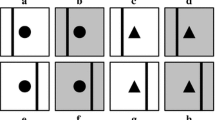Abstract
Artificial neural networks have been successfully used to approximate value functions for tasks involving decision making. In domains where decisions require a shift in judgment as the overall state changes, it is hypothesized here that methods utilizing multiple artificial neural networks are likely to provide a benefit as an approximation of a value function over those that employ a single network. The card game Dominion was chosen as the domain to examine this. This paper compares artificial neural networks generated by multiple machine learning methods successfully applied to other games (such as in TD-Gammon) to a genetic algorithm method for generating two neural networks for different phases of the game along with evolving the transition point. The results demonstrate a greater success ratio with the genetic algorithm applied to two neural networks. This suggests that future work examining more complex neural network configurations and richer evolutionary exploration could apply to Dominion as well as other domains necessitating shifts in strategy.
Similar content being viewed by others
References
Haykin S (1998) Neural networks: a comprehensive foundation. Prentice Hall, Upper Saddle River, NJ
Hornik K, Stinchcombe M, White H (1989) Multilayer feedforward networks are universal approximators. Neural Netw 2(5):359–366. doi:10.1016/0893-6080(89)90020-8
Paliwal M, Kumar U (2009) Neural networks and statistical techniques: a review of applications. Expert Syst Appl 36(1):2–17. doi:10.1016/j.eswa.2007.10.005
Coulom R (2004) High-accuracy value-function approximation with neural networks applied to the Acrobot. In: ESAAN’2004 Proceedings of 12th European symposium on artificial neural networks, Bruges, Belgium, pp 7–12. doi:10.1.1.144.1025
Goldberg D, Holland J (1988) Genetic algorithms and machine learning. Mach Learn 3(2–3):95–99. doi:10.1023/A:1022602019183
Leng K, Chen X (2012) A genetic algorithm approach for TOC-based supply chain coordination. Appl Math Inf Sci 6(3):767–774
Wong S, Feng S (2012) A study on genetic algorithm and neural network for mini-games. J Inf Sci Eng 28:145–159. doi:10.1109/TAAI.2010.35
Winder R (2013) Generating artificial neural networks for value function approximation in a domain requiring a shifting strategy. In: Applications of evolutionary computation. Lecturer notes in computer science, vol 7835. Springer, Berlin, Heidelberg, pp 294–303. doi:10.1007/978-3-642-37192-9_30
Tesauro G (1992) Practical issues in temporal difference learning. Mach Learn 8:257–277. doi:10.1007/978-1-4615-3618-5_3
Tesauro G (1995) Temporal difference learning and TD-Gammon. Commun ACM 38(3):58–68. doi:10.1145/203330.203343
Sutton R, Barto A (1998) Reinforcement learning. MIT Press, Cambridge
Rumelhart D, Hinton G, Williams R (1986) Learning representations by back-propagating errors. Nature 323(6088):533–536. doi:10.1038/323533a0
Ghory I (2004) Reinforcement learning in board games. Technical report CSTR-04-004, Department of Computer Science, University of Bristol, UK
Pfeiffer M (2004) Reinforcement learning of strategies for Settlers of Catan. In: Proceedings of the international conference on computer games: artificial intelligence, design and education, reading
Konen W, Bartz-Beielstein T (2009) Reinforcement learning for games: failures and successes. In: GECCO’09 Proceedings of the 11th annual conference companion on genetic evolutionary computation conference: late breaking papers. ACM, New York, pp 2641–2648. doi:10.1145/1570256.1570375
Galway L, Charles D, Black M (2009) Improving temporal difference game agent control using a dynamic exploration rate during control learning. In: Proceedings of IEEE Symposium on Computational Intelligence and Games, Milano, pp 38–45. doi:10.1109/CIG.2009.5286497
Pollack J, Blair A (1998) Co-evolution in the successful learning of backgammon strategy. Mach Learn 32(3):225–240. doi:10.1023/A:1007417214905
Oon W, Henz M (2007) M2ICAL analyses HC-Gammon. In: AAAI’07 Proceedings of the 22nd AAAI conference on artificial intelligence. AAAI Press, Vancouver, British Columbia, Canada, pp 621–626
Azaria Y, Sipper M (2005) GP-Gammon: using genetic programming to evolve backgammon players. Genet Program 3447:132–142. doi:10.1007/978-3-540-31989-4_12
Koza J (1992) Genetic programming on the programming of computers by means of natural selection (complex adaptive systems). The MIT Press, Cambridge
Willis M, Hiden H, Marenbach P, McKay B, Montague G (1997) Genetic programming: an introduction and survey of applications. In: Proceedings of second international conference on GALESIA’97, Glasgow, pp 314–319. doi:10.1049/cp:19971199
Bensabbat A, Sipper M (2012) Evolving board-game players with genetic programming. In: GECCO’11 Proceedings of the 13th annual conference companion on genetic and evolutionary computation. ACM, New York, pp 739–742. doi:10.1145/2001868.2002080
Fogel D, Hays T, Hahn S, Quon J (2004) A self-learning evolutionary chess program. Proc IEEE 92(12):1947–1954. doi:10.1109/JPROC.2004.837633
Hauptman A, Sipper M (2005) GP-EndChess: using genetic programming to evolve chess endgame players. Genet Program 3447:120–131. doi:10.1007/978-3-540-31989-4_11
Chellapilla K, Fogel D (1999) Evolving neural networks to play checkers without relying on expert knowledge. IEEE Trans Neural Netw 10(6):1382–1391. doi:10.1109/72.809083
Cai X, Wensch D (2007) Computer Go: a grand challenge to AI. Stud Comput Intell 63:443–465. doi:10.1007/978-3-540-71984-7_16
Richards N, Moriarty D, Mikkulainen R (1998) Evolving neural networks to play Go. Appl Intell 8(1):85–96. doi:10.1023/A:1008224732364
Lin C Ting C (2011) Emergent tactical formation using genetic algorithm in real-time strategy games. In: International conference on technologies and applications of artificial intelligence, Chung-Li, pp 325–330. doi:10.1109/TAAI.2011.63
Othman N, Decraene J, Cai W, Hu N, Low M, Gouaillard A (2012) Simulation-based optimization of StarCraft tactical AI through evolutionary computation. In: IEEE conference on computational intelligence and games, Granada, pp 394–401. doi:10.1109/CIG.2012.6374182
Tong C, On C, Teo J, Kiring A (2011) Evolving neural controllers using GA for Warcraft 3-real time strategy game. In: Sixth international conference on bio-inspired computing: theories and applications, Penang, pp 15–20. doi:10.1109/BIC-TA.2011.70
Mahlmann T, Togelius J, Yannakakis G (2012) Evolving card sets toward balancing Dominion. In: IEEE congress on evolutionary computation (CEC), Brisbane, pp 1–8. doi:10.1109/CEC.2012.6256441
Vaccarino DX (2008) Dominion game rules. http://www.riograndegames.com/uploads/Game/Game_278_gameRules.pdf. Accessed Apr 2013
Vaccarino DX (2009) Dominion: intrigue game rules. http://www.riograndegames.com/uploads/Game/Game_306_gameRules.pdf. Accessed Apr 2013
Vaccarino DX (2009) Dominion: seaside game rules. http://www.riograndegames.com/uploads/Game/Game_326_gameRules.pdf. Accessed Apr 2013
Vaccarino DX (2010) Dominion: prosperity game rules. http://www.riograndegames.com/uploads/Game/Game_361_gameRules.pdf. Accessed Apr 2013
Riedmiller M, Braun H (1993) A direct adaptive method for faster backpropagation learning: the RPROP algorithm. In: IEEE conference on neural networks, San Francisco, CA, pp 586–591. doi:10.1109/ICNN.1993.298623
Author information
Authors and Affiliations
Corresponding author
Appendix: Algorithm for reinforcement learning methods (R/TD) using RPROP
Appendix: Algorithm for reinforcement learning methods (R/TD) using RPROP


Rights and permissions
About this article
Cite this article
Winder, R.K. Methods for approximating value functions for the Dominion card game. Evol. Intel. 6, 195–204 (2014). https://doi.org/10.1007/s12065-013-0096-9
Received:
Revised:
Accepted:
Published:
Issue Date:
DOI: https://doi.org/10.1007/s12065-013-0096-9




